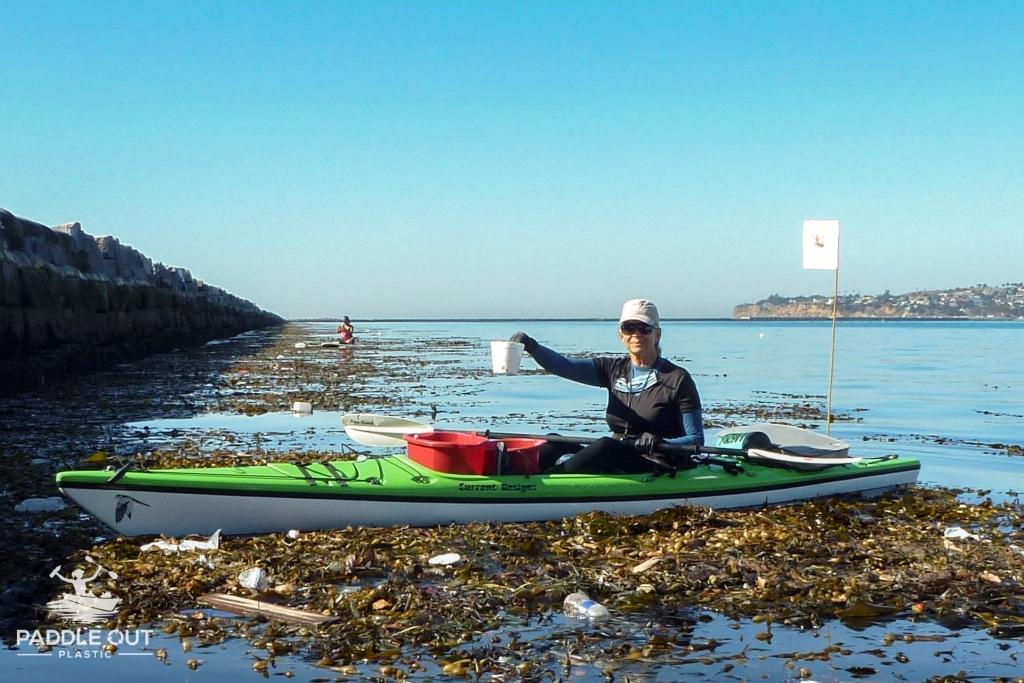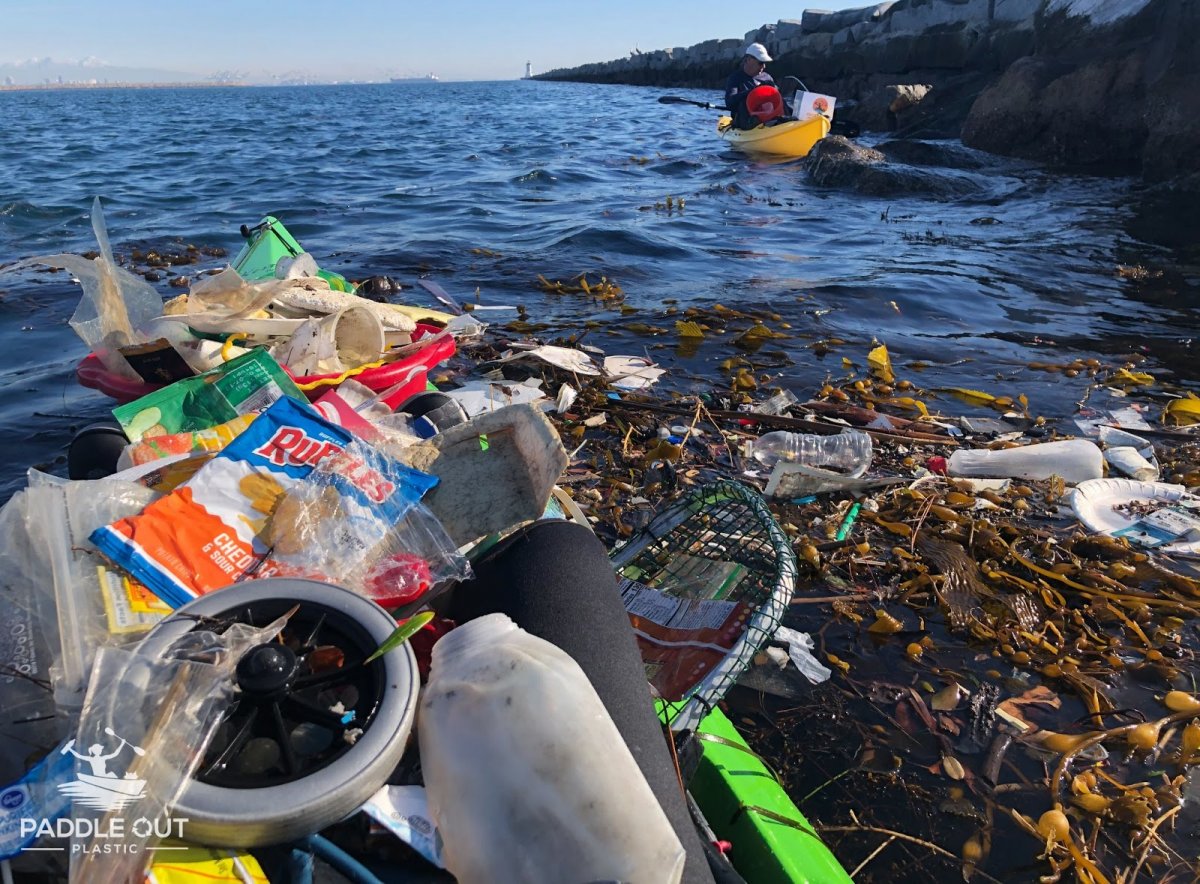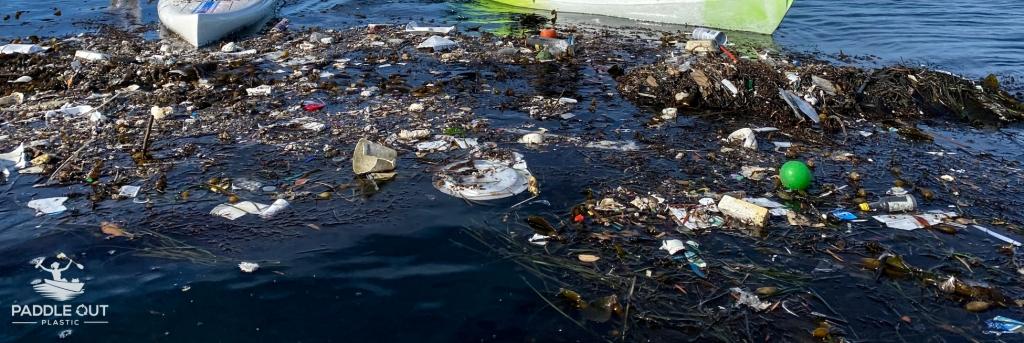Paddling Against a Plastic Stream

Trash floats along the Cabrillo Beach breakwater by Paddle Out Plastic

Paddle Out volunteer tows a pile of plastic litter fished out of LA Harbor.

Eva Cicoria, Paddle Out volunteer, raises styrofoam cup fished out from the harbor.

The Break Free From Plastic Pollution Act, introduced by Congressman Lowenthal, Congresswoman Clark, and Senator Merkley, addresses producer responsibility, clean air and water, and environmental justice. One of the sections will require all retailers to charge a 10 cent tax on any carry-out bag, and a portion of it will be deposited in the Recycling and Litter Cleanup Trust Fund.
- Reduce your use of plastic, especially single-use plastic;
- Join our campaign, ask your Representative and Senator to endorse the Break Free From Plastic Pollution Act to help quell the flow down the plastic pollution pipeline;
- Join us on a paddle out if you have a vessel. Look us up at Paddle Out Plastic on Facebook and Instagram!
Eva Cicoria (she/her) is a former Conservation Chair and Newsletter Editor of the Palos Verdes-South Bay Group of the Sierra Club.



Add new comment